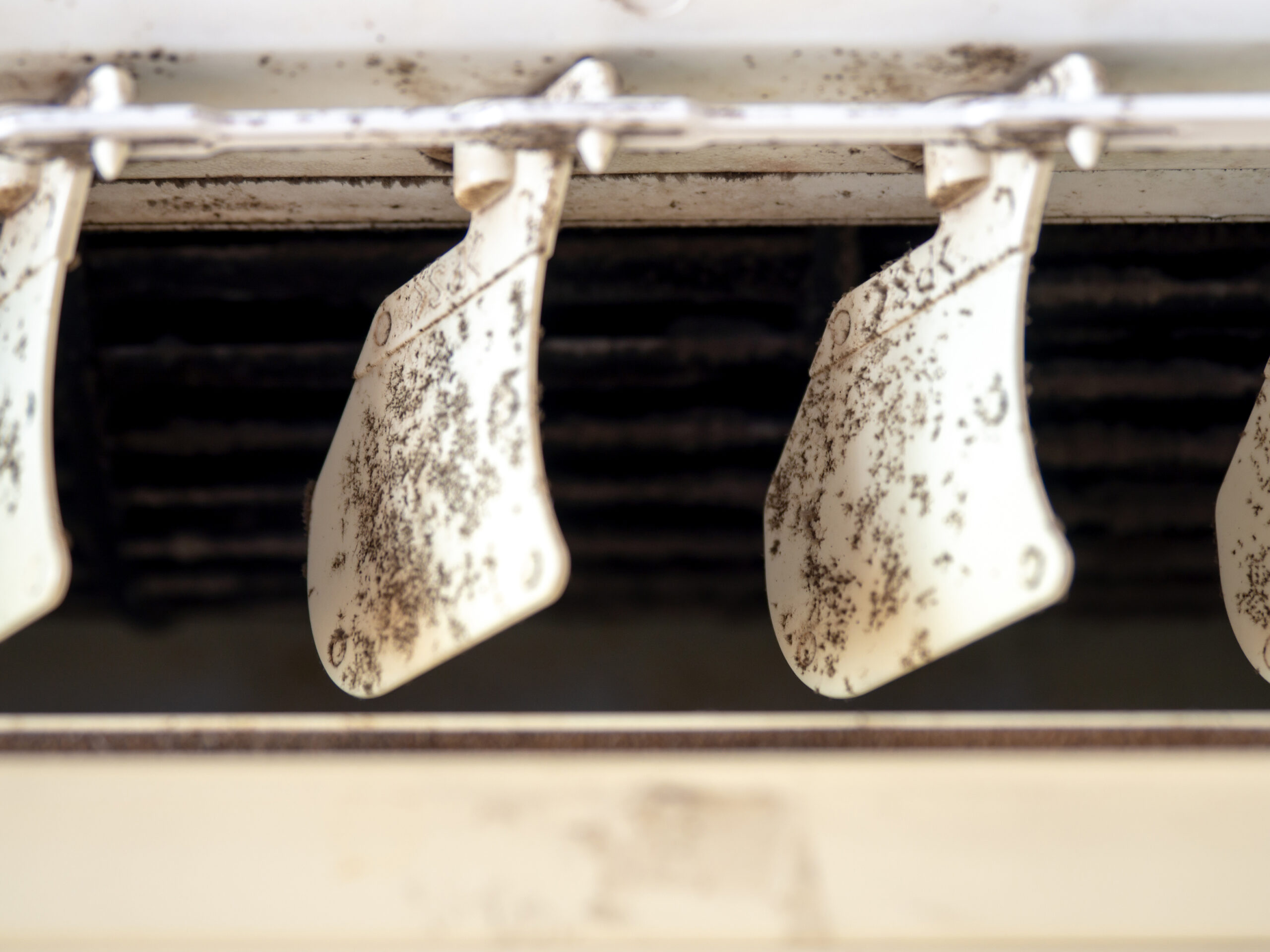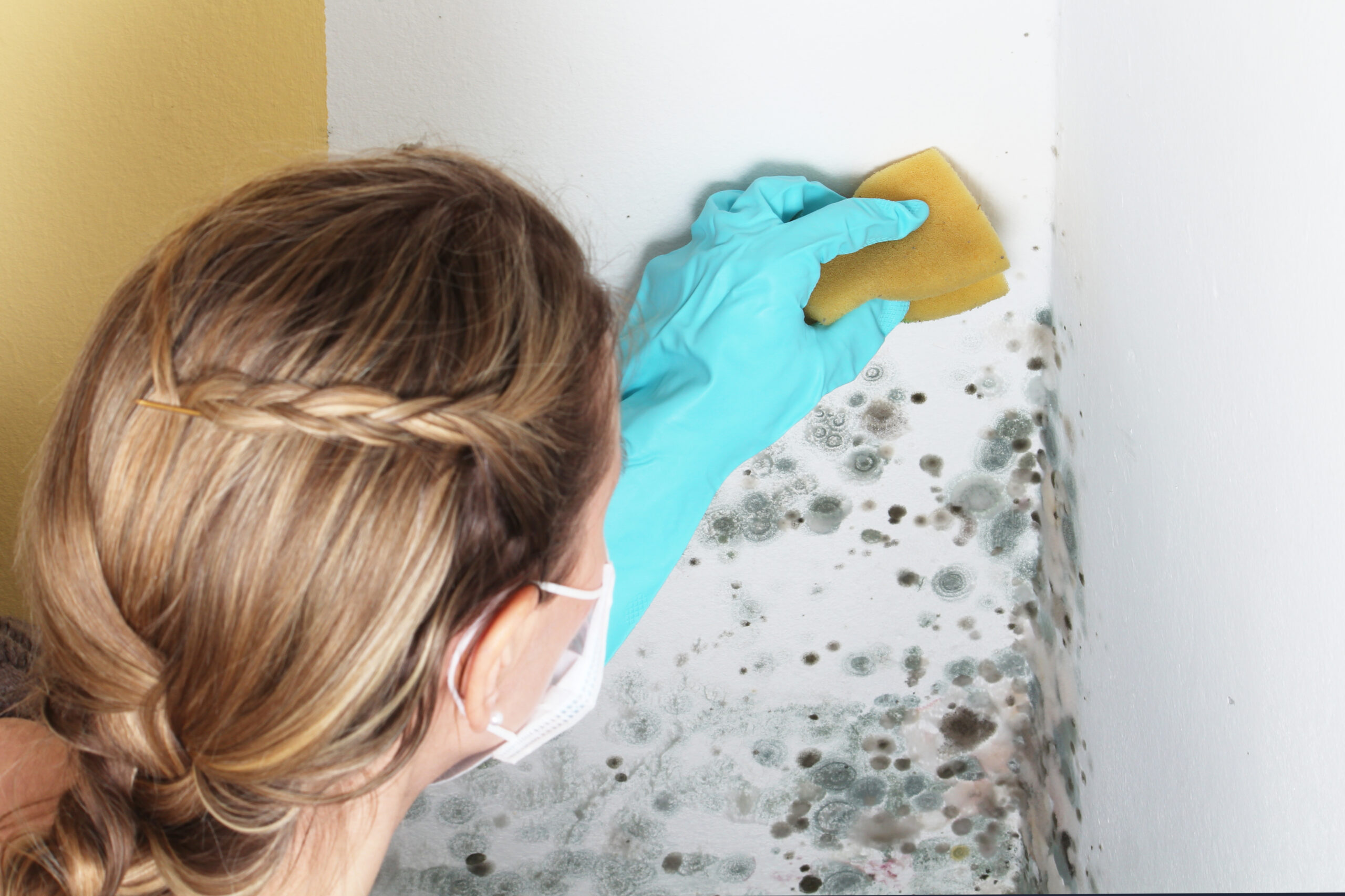Toxic black mold—scientifically known as Stachybotrys chartarum—is a serious household hazard that can silently impact your health and the integrity of your home. At Mold Zero, we help homeowners identify and eliminate mold with professional services like Mold Removal & Remediation, Signature Fog Sanitization, Pathogen Removal, Air Quality Testing, and Mold Odor Removal.
Understanding Toxic Black Mold
Toxic black mold thrives in environments with consistent moisture, making Florida homes especially susceptible due to the state’s humid climate, frequent storms, and high water table.
Why Florida Homes Are at Higher Risk
Florida’s warm temperatures and heavy rainfall create ideal conditions for mold growth—especially in:
- Homes with poor ventilation or high humidity
- Properties with past flooding or roof leaks
- Bathrooms, laundry rooms, and kitchens
- Older homes with cellulose-rich materials like wood and drywall
Once these areas stay damp for 24–48 hours, mold spores can quickly take hold and spread.
What Makes Black Mold “Toxic”?
Toxic black mold produces mycotoxins—harmful compounds that can negatively affect health when inhaled, ingested, or absorbed through the skin. It’s especially dangerous for children, seniors, and people with respiratory or immune conditions.
Where It Grows
Black mold feeds on cellulose-based materials, such as:
- Drywall and plaster
- Wood framing
- Ceiling tiles and insulation
- Carpet backing and padding
Moisture from leaks, high humidity, or poor insulation can trigger mold growth behind walls, under flooring, attics or in crawl spaces.
4 Signs of Black Mold in Your Home
1. Visible Dark Patches or Stains
Black mold appears as clusters of dark green or black patches in humid areas and on materials like drywall, wood, or insulation.
What to Look For:
- Stains or spots on ceilings, walls, or baseboards
- Warping or bubbling paint and wallpaper
- Circular spreading patterns
- Slimy or fuzzy surface texture
If you’ve had recent water damage, you’re at greater risk. Mold Zero can assess and remediate affected areas before it spreads further.
2. Persistent Musty Odor
Even without visible mold, a strong musty odormay be the first warning sign. The smell is often described as damp, earthy, or like rotting wood.
Ask Yourself:
- Does the room smell musty even when it’s clean?
- Is the odor worse after rain or in humid spaces?
- Do you rely on air fresheners to mask the smell?
This odor may indicate hidden mold in walls, under flooring, or in HVAC systems. Mold Zero’s Inspection and Mold Odor Removal services can help detect and resolve hidden mold issues.
3. Unexplained Health Issues
Physical Health Symptoms
Exposure to black mold can trigger:
- Chronic coughing, wheezing, or shortness of breath
- Persistent sinus congestion or sore throat
- Skin rashes or irritation
- Red, itchy, or watery eyes
- Fatigue, low-grade fever, or headaches
Mental Health Symptoms
Prolonged exposure may also cause:
- Brain fog and memory issues
- Irritability, anxiety, or mood swings
- Sleep disturbances or insomnia
If symptoms improve when you’re away from home, that’s a major clue mold may be the cause.
4. Signs of Water Damage or Excess Moisture
Mold needs moisture to grow, so spotting early water damage is key.
Check for:
- Soft or sagging drywall
- Warped floors or stained carpets
- Mold around plumbing fixtures or windows
- Visible condensation on windows
Mold Zero can help identify and fix the underlying moisture issues, from leaks to ventilation problems.
Preventive Measures and Next Steps
If you’ve noticed visible mold, musty odors, or unexplained health symptoms, act fast—Florida’s climate allows mold to spread quickly. Mold Zero provides full-service solutions, including Mold Removal, Signature Fog Sanitization, Pathogen Removal, and Odor Removal.
Inspect Your Home
Look in high-risk areas:
- Bathrooms, kitchens, laundry rooms, and basements
- Attics and crawl spaces
- Around HVAC systems or water heaters
- Behind walls or under floors after leaks
Control Moisture and Improve Ventilation
Reduce indoor moisture by:
- Fixing leaks in roofs, pipes, and windows
- Using dehumidifiers, especially during rainy seasons
- Ventilating bathrooms and kitchens properly
- Cleaning gutters and ensuring water drains away from your home
- Maintaining HVAC systems for proper airflow
Seek Professional Help
DIY methods often miss deeper infestations and may worsen the issue by releasing more spores. Mold Zero uses non-toxic treatments like Signature Fog Sanitization to eliminate mold thoroughly and safely.
Trust the Experts
Professional remediation is more than cleaning—it’s about protecting your health and home. Mold Zero reduces the chance of re-occurrence and future outbreaks with lasting solutions.
Protect Your Home with Mold Zero
If you’ve seen or sensed any signs of black mold, don’t wait for the problem to escalate.
Our Services Include:
- Mold Removal & Remediation
- Signature Fog Sanitization
- Pathogen Removal
- Mold Odor Removal
We use safe, proven methods to eliminate mold and prevent it from returning.
Why DIY Methods Aren’t Enough in Florida
DIY mold solutions like bleach or vinegar often fail to address hidden mold and airborne spores—especially in Florida’s humid environment. Here’s why DIY remedies aren’t reliable:
- Bleach: It doesn’t penetrate porous or semi-porous materials, it may not kill mold spores, it doesn’t neutralize mycotoxins, it’s corrosive and unstable. The active ingredient remains on the surface leaving only the water that soaks in but cannot kill the roots of the mold so it can look clean but then it returns.
- Vinegar: can kill some species of mold on the surface, it won’t neutralize airborne spores or mold growing inside walls or HVAC systems.
- Essential Oils: may mask the smell or inhibit surface mold growth temporarily, but are not a substitute for professional remediation.
- Baking Soda & Hydrogen Peroxide: can help remove stains but have limited effect on live mold colonies and zero effect on spores that may be circulating in the air.
Attempting DIY removal can release spores, leading to widespread contamination and health risks like allergies, asthma, or chronic infections.
The Bottom Line
DIY fixes may be quick, but they don’t stop mold at the source. For lasting results, professional remediation is essential.
Toxic black mold is a serious threat to your home and health. Watch for these four signs:
- Visible dark mold patches
- Persistent musty odor
- Unexplained health symptoms
- Signs of water damage or excess moisture
If you’re wondering what black mold looks or smells like—you now know what to check and when to act.
Contact Mold Zerotoday to schedule your inspection. We’re here to help you breathe easier.




